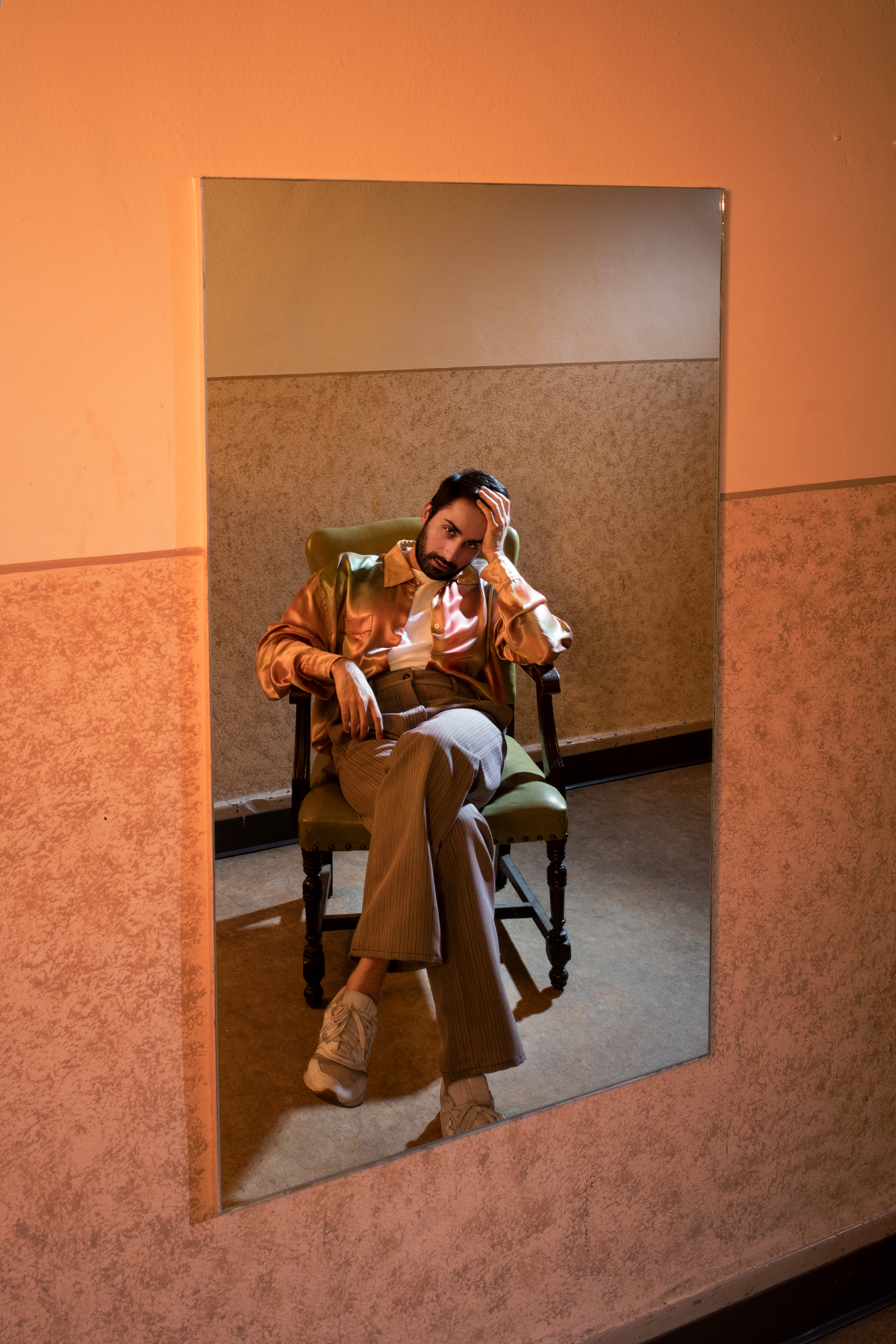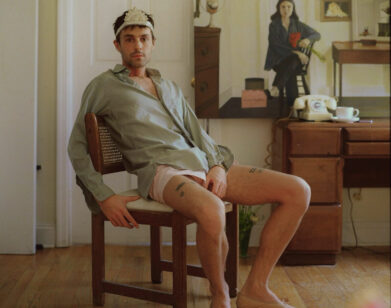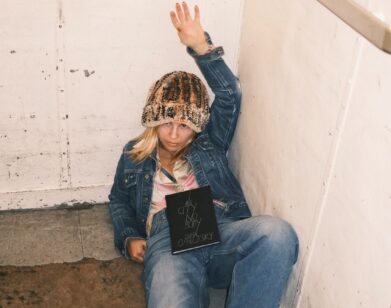Painter Salman Toor Draws Out the Strength in Sissies

Shirt and Pants by Marni. T-Shirt by Calvin Klein Underwear. Sneakers Salman’s Own.
Images of sculpted torsos and creatine-coursing hardbods abound in contemporary gay culture, but Salman Toor prefers to paint sissies. “There is just so much beauty and so much to say about them,” he says, gesturing to the subject of one of his recent paintings, a young brown man splayed out in bed with a noodle-like arm draped over his head. “The way people consume masculinity—I’m trying to kick it out of its complacency.”
The 36-year-old New York–based artist specializes in fluid, figurative depictions of (mostly) gay men in scenes of warm camaraderie or thoughtful repose. Born and raised in Pakistan, Toor came to the U.S. to study art, and for the past five years he has been living in the East Village and working out of a modest studio in Bushwick, Brooklyn. “When I moved to New York, I wanted to be [Peter Paul] Rubens,” he says, adding that he was drawn to the mythology of the East Village as immortalized by queer artists such as David Wojnarowicz and Martin Wong. Particularly inspired by the aesthetics of 17th- and 18th-century European portraiture, Toor has repurposed much of that Romantic vernacular for his loving take on queer bohemia, filled with plenty of couch side banter and drunken sashaying. In one of his most recent paintings, a condo, three friends sit around a dinner table, one holding up his phone as a redhead across from him stares at it beguilingly. “I thought it was gossip,” Toor says of the phone’s contents. “Like, someone put a picture of themselves up, and this bitch thinks it’s really funny.”
One wall in Toor’s studio is covered with ephemera: a 19th-century photograph of a gay orgy alongside a ’70s sweater-vest ad, the cover of a cheap romance novel above an ancient nymph sculpture. For the past few months, he has been spending most of his time here working on new paintings for a solo show at Nature Morte Gallery in New Delhi in December, followed by a group show at New York’s Marianne Boesky in January, and, to top it all off, his own exhibition at the Whitney Museum of American Art in March. While Toor has made a name for himself portraying a liberated downtown milieu, he has also been investigating his own more complicated identity. “I like to play with the dignity of a brown person, especially a hairy brown body, in that 17th-century language, which is filled with smooth alabaster. Calm surfaces and bodies—I want to destroy that idea of beauty.” Some of his new paintings feature variations of his younger self in Lahore, dressing up like a princess or witnessing violence against a gay man at his neighbor’s house. “I’ve been exposed to things in Pakistan that don’t allow me to take these liberties for granted,” he says. “Being queer—I accepted it for a very long time, but I never really celebrated it. And I want to celebrate it now.”






